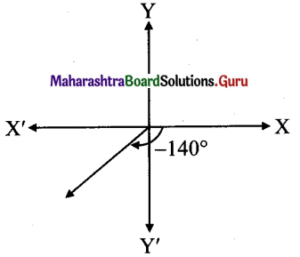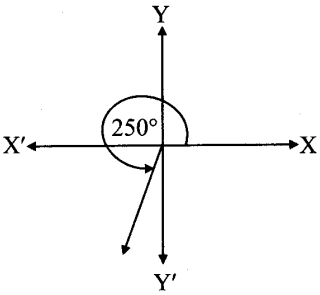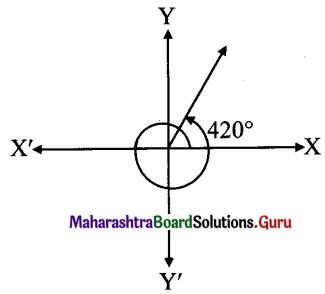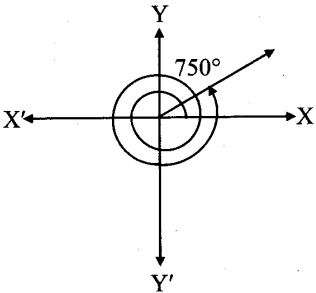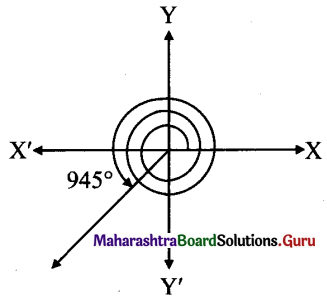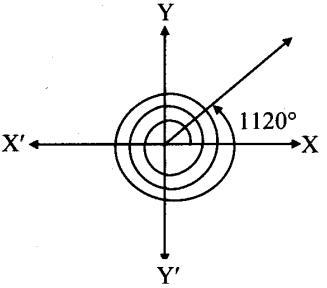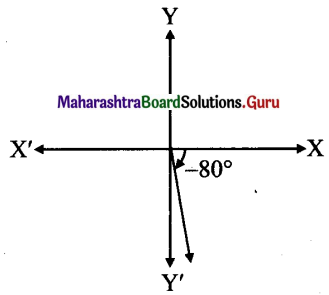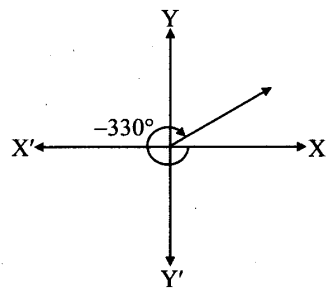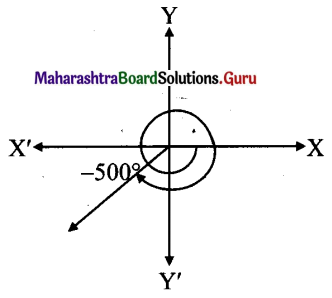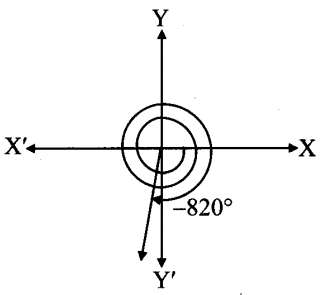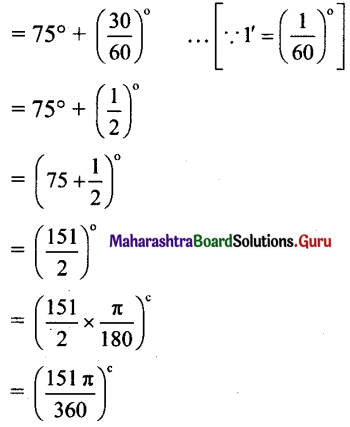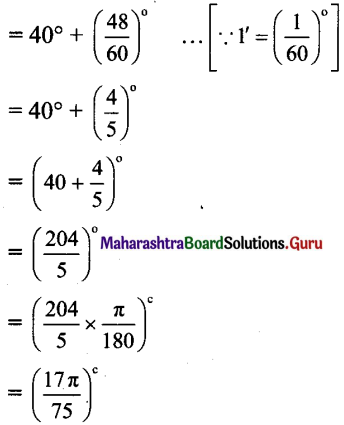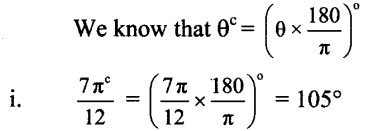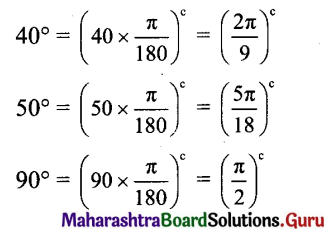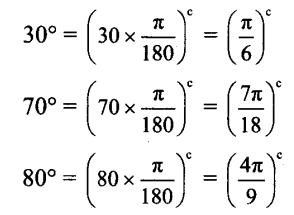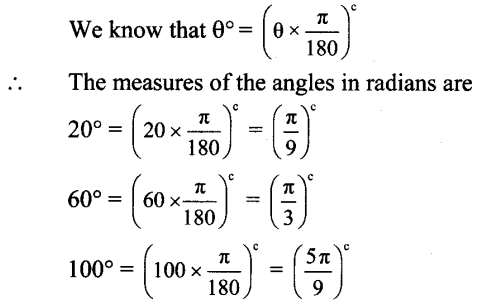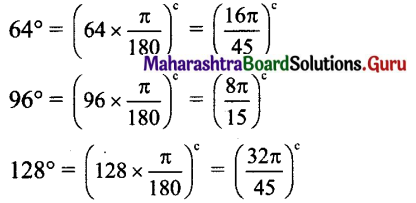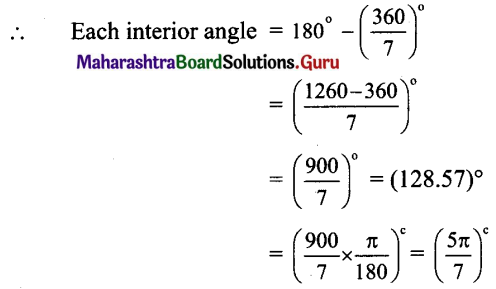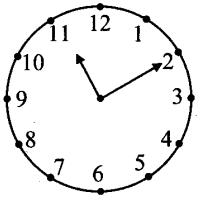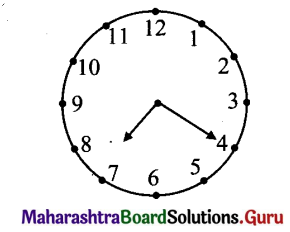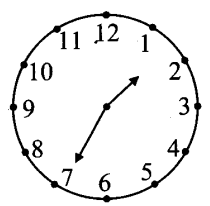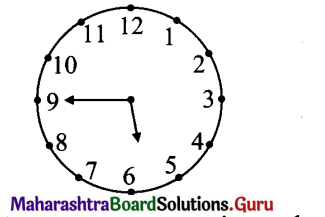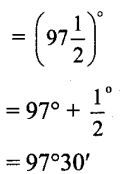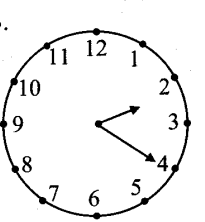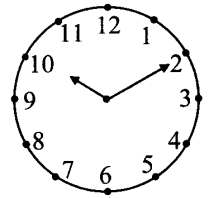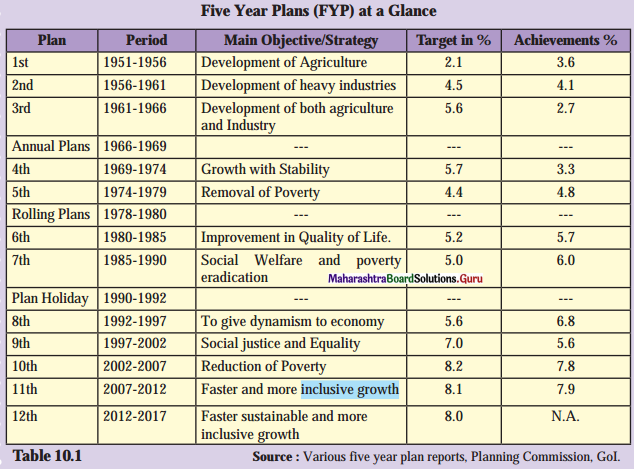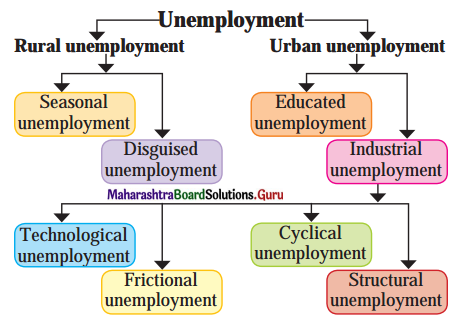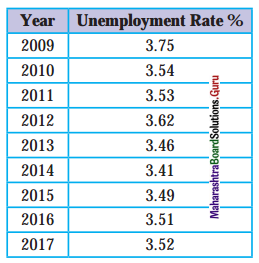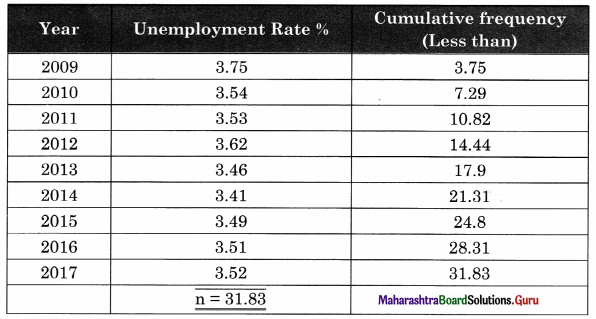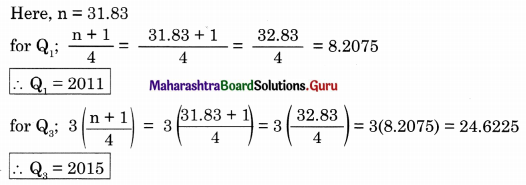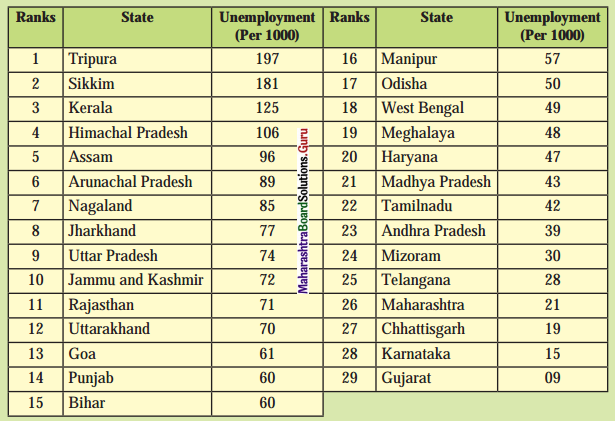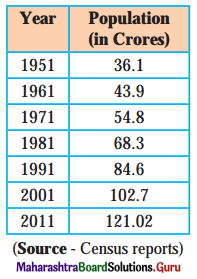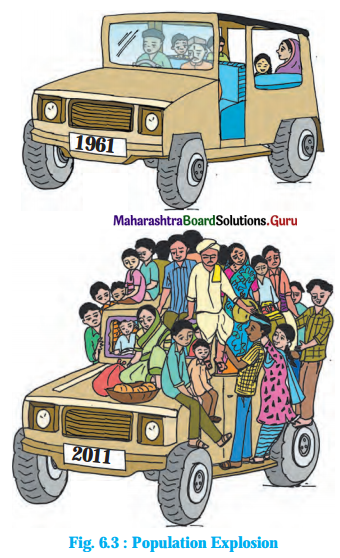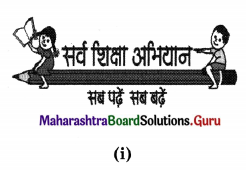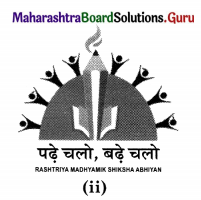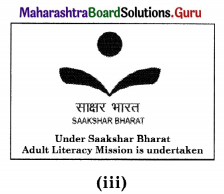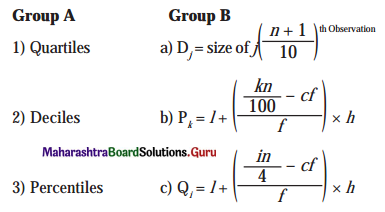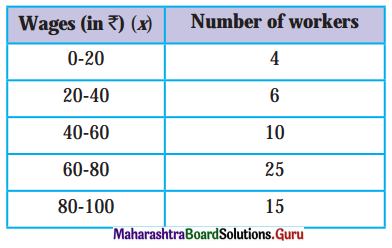Balbharti Maharashtra State Board Class 11 Economics Solutions Chapter 8 Poverty in India Textbook Exercise Questions and Answers.
Std 11 Economics Chapter 8 Question Answer Poverty in India Maharashtra Board
Class 11 Economics Chapter 8 Poverty in India Question Answer Maharashtra Board
Economics Class 11 Chapter 8 Question Answer Maharashtra Board
1. Assertion and Reasoning questions:
Question 1.
Assertion (A): Poverty level declines with a rise in agricultural output.
Reasoning (R): Agricultural incomes have declined due to wide fluctuations in climatic conditions.
(i) (A) is true, but (R) is False.
(ii) (A) is false, but (R) is True.
(iii) Both (A) and (R) are true and (R) is the correct explanation of (A).
(iv) Both (A) and (R) are true, but (R) is not the correct explanation of (A).
Answer:
(iv) Both (A) and (R) are true, but (R) is not the correct explanation of (A).
Question 2.
Assertion (A): Urban poverty is attributed mainly to spillover effects of migration among the rural poor.
Reasoning (R): Poor rural infrastructure, lack of alternative jobs results in forced migration.
(i) (A) is true, but (R) is False.
(ii) (A) is false, but (R) is True.
(iii) Both (A) and (R) are true and (R) is the correct explanation of (A).
(iv) Both (A) and (R) are true, but (R) is not the correct explanation of (A).
Answer:
(iii) Both (A) and (R) are true and (R) is the correct explanation of (A).

Question 3.
Assertion (A): Relative poverty is found in all the countries of the world.
Reasoning (R): Differences in the levels of income is the only criteria for judging relative poverty,
(i) (A) is true, but (R) is False.
(ii) (A) is false, but (R) is True.
(iii) Both (A) and (R) are true and (R) is the correct explanation of (A).
(iv) Both (A) and (R) are true, but (R) is not the correct explanation of (A).
Answer:
(i) (A) is true, but (R) is False.
Question 4.
Assertion (A): Poverty is not just a lack of money but also a lack of capabilities.
Reasoning (R): Lack of freedom to satisfy hunger, lack of health care facilities, denial of political freedom leads to poverty.
(i) (A) is true, but (R) is False.
(ii) (A) is false, but (R) is True.
(iii) Both (A) and (R) are true and (R) is the correct explanation of (A).
(iv) Both (A) and (R) are true, but (R) is not the correct explanation of (A).
Answer:
(iii) Both (A) and (R) are true and (R) is the correct explanation of (A).
Question 5.
Assertion (A): Food security, credit facilities guarantee social protection to the poor.
Reasoning (R): Leakages in the administrative system perpetuate poverty.
(i) (A) is true, but (R) is False.
(ii) (A) is false, but (R) is True.
(iii) Both (A) and (R) are true and (R) is the correct explanation of (A).
(iv) Both (A) and (R) are true, but (R) is not the correct explanation of (A).
Answer:
(iv) Both (A) and (R) are true, but (R) is not the correct explanation of (A)
2. Find the odd word out:
Question 1.
Colours of Ration card – White, Green, Saffron, Yellow
Answer:
Green

Question 2.
High Poverty ratio – Chhatisgarh, Jharkhand, Bihar, Kerala
Answer:
Kerala
Question 3.
Calories – 2400, 1800, 2100, 2250
Answer:
1800
3. Give economic terms:
Question 1.
Denial of opportunities to certain sections of the people in the society.
Answer:
Social exclusion
Question 2.
Concept of poverty that covers material and non-material dimensions.
Answer:
Multidimensional poverty
Question 3.
Poverty is judged on the basis of relative standards of livings of the people.
Answer:
Relative poverty

Question 4.
Poverty can be completely eradicated.
Answer:
Absolute poverty
Question 5.
Threshold expenditure is needed to satisfy basic human needs at socially acceptable levels.
Answer:
Task Force on Eliminating Poverty
4. Identify and explain the concepts from the given illustration:
Question 1.
Baban’s daughter had to be hospitalized due to weakness caused by undernourishment or lack of minimum calorie requirement in the intake of food.
Answer:
Absolute poverty.
The absence of minimum income to satisfy the desired level of the calorie intake of food is called absolute poverty. Absolute poverty is generally found in developing countries like India. The situation of undernourishment can be overcome by taking the minimum required calorie food intake as per the standard set by the planning commission.
Question 2.
Dhanajirao is a wealthy landlord, but his annual income is relatively less in comparison to entrepreneur Raobahadur.
Answer:
Relative poverty.
Relative poverty can be judged by comparing the standards of living of different sections of the people. Relative poverty is found in all the countries of the world. It cannot be completely eradicated.
Question 3.
Urmi’s family live in a situation whereby they are not able to fulfill even the basic needs of life such as food, clothing, and shelter.
Answer:
Absolute poverty.
This is the case of absolute poverty where people have less income in which they cannot buy basic needs for living. Such poverty is generally found in developing countries like India. It can be eradicated by applying effective measures by the Government.

Question 4.
Sanjay’s family receives food grains on the basis of yellow ration cards through the public distribution system.
Answer:
Absolute poverty.
In absolute poverty, people are very poor and have very little income. Ration card is one of the measures to eradicate poverty by giving food-grains through ration shop at a subsidized rate.
Question 5.
In certain parts of the state, starvation-related death has been observed whereas in certain areas gross wastage of food has been reported.
Answer:
Relative poverty.
This is an example of differences between two different sections of people in terms of consumption and level of income. Such differences create relative poverty. It is found in all the countries of the world. It cannot be eradicated completely.
5. State with reasons whether you agree or disagree with the following statement:
Question 1.
Population control is the only measure to eradicate poverty.
Answer:
No, I do not agree with the statement.
Policy measures undertaken for the eradication of poverty are as follows:
- Agriculture: Providing minimum support prices for selected crops and providing cheaper credit facilities to farmers are the measures taken to ensure stable agricultural income to farmers.
- Rural works: New employment is created for labours of rural areas by way of construction of roads, irrigation projects, etc.
- Rural industrialization: To increase the income of people living in rural areas, employment is created by promoting small-scale and cottage industries.
- Minimum wages: In 1948, the Minimum Wages Act was passed to provide fair wages to laborers and workers of industrial and agricultural areas.
Besides these, there are many other causes like:
- Public distribution system
- Nationalization of banks
- Progressive tax measures
- Free Education
- Affordable housing
- Health Facilities
- Skill development and self-employment.

Question 2.
Relative poverty is universal by nature.
OR
Relative poverty is found in all countries.
OR
Relative poverty is found in the richest of the rich countries.
Answer:
Yes, I agree with the statement.
- Differences in income earned by people in relative poverty.
- If one person earns less than the other, he is said to be poorer than the other.
- So, this difference in the earnings of people will be found in all the countries of the world.
- This is found because of differences in talents, education, abilities, skills, etc. of different people, and this cannot be removed from any country.
- So, relative poverty is a universal phenomenon.
Question 3.
Regional imbalance is the only cause of poverty.
Answer:
No, I do not agree with the statement.
The causes of poverty besides regional imbalance are as follows:
- Population explosion: Due to the increase in population, poverty is growing rapidly.
- Slow economic growth: There is slow industrial and agricultural growth due to which the economy is growing slowly.
- Unemployment and Underemployment: Unemployment is the major factor of increased poverty.
- Economic inequalities: There are inequalities in the distribution of income, assets, consumption expenditure, which in fact have increased poverty.
Besides these, there are many other causes like:
- Inaccessibility to infrastructural facility
- Inflation in the country
- The vicious circle of poverty
- Other factors – like gender discrimination, corruption, natural disasters, etc.

6. Answer in detail:
Question 1.
Assess the various measures undertaken to eradicate poverty.
Answer:
Policy measures undertaken for the eradication of poverty are as follows:
- Control of population: There are various population policies and family welfare programmes introduced to control the growth of the population.
- Agriculture: Providing minimum support prices for selected crops and providing cheaper credit facilities to farmers are the measures taken to ensure stable agricultural income to farmers.
- Rural works: New employment is created for labours of the rural areas by way of construction of roads, irrigation projects, etc.
- Rural industrialization: To increase the income of people living in rural areas, employment is created by promoting small-scale and cottage industries.
- Minimum wages: In 1948, the Minimum Wages Act was passed to provide fair wages to labourers and workers of industrial and agricultural areas.
- Public distribution system: Under the public distribution system food grains are made available to poor people at highly subsidized rates through ration shops.
- Nationalization of banks: Nationalization of banks was undertaken to provide loans to poor people at lower interest rates.
- Progressive tax measures: Progressive income tax system has been introduced to reduce inequalities in the distribution of income.
- Education: Primary education is made free as well as education for girls is provided at no cost to increase the enrollment ratio.
- Affordable housing: Affordable housing facilities are provided to the rural and urban poor through the Slum Rehabilitation programme.
- Health Facilities: Government hospitals, primary health centers have been established to provide medical facilities to poor people.
- Skill development and self-employment: Skill-based training is provided for skill development which inspires people towards self-employment.
11th Economics Digest Chapter 8 Poverty in India Intext Questions and Answers
Can you tell: (Textbook Page No. 51)
Express your opinion on the following:
Questions 1.
There is a thick line of rural-urban economic divide in India.
Answer:
Yes, there is a thick line of rural-urban economic divide in India because of around 65% population lives in a rural area but do not have proper road access for vehicles, lack of health facilities, lack of employment opportunities, lack of technology, a rural economy based on subsistence strategies, the population is spread thinly, due to slow economic growth people migrating from rural to the urban area, etc.
In an urban economy around 35% population lives with good road access, many health facilities, employment opportunities, advanced technology, the thick density of population, high economic growth rate, etc.
Question 2.
There is an equitable distribution of income and wealth in the country.
Answer:
No, there is an unequal distribution of income and wealth in the country, that’s why India has adopted a progressive taxation policy. The government formulated many welfare policies to raise the income of poor income groups.

Question 3.
All the citizens have equal access to education, health, energy, and drinking water.
Answer:
No, there is unequal access to education, healthy drinking water.
In urban areas, people can afford all the amenities. There are many educational institutions 24 hours availability of electricity, many health centers with modern equipment and technology, clean drinking water, etc.
Question 4.
There is no hunger, starvation, or malnutrition in the country.
Answer:
No, I don’t agree with the statement.
In India a large number of people especially women and children are not able to get food.
14.8% (195.9 million people are undernourished, 51.4% of women age between 15 to 49 years) are anemic, 38.4% of the children aged under five are too short for their age, 21% children have weight too low for their height and there is high child mortality rate prevailing in India.
Question 5.
There is a lack of sanitation facilities in the country.
Answer:
Yes, I agree with the statement.
In rural areas, most of the people (300 to 522 million) still practice open defecation.
In addition to considerable Indian homes having no toilets, access to water supply and drainage facilities is also another serious problem.
Question 6.
The poverty ratio is uniform across all the states.
Answer:
In India poverty is different from state to state.
In India first ten poorest states or high poverty ratio is in Chhatisgarh (93%), Jharkhand (36.96%), Manipur (36.89%), Arunachal Pradesh (34.67%), Bihar (33.74%), Odisha (32.59%), Assam (31.98%), Madhya Pradesh (31.65%), Uttar Pradesh (29.43%), Karnataka (20.91%) and poverty ratio is lowest in Maharashtra, Gujarat, Kerala, Tamil Nadu, etc.
Note: The above data is according to the 2016 report.
Find out: (Textbook Page No. 51)
Prepare a list of 5 countries in the world having absolute poverty with reference to the latest World Bank Report.
Answer:
All the developing countries will face absolute poverty for e.g. India, China, Pakistan, Nepal, Bhutan, etc.

Can you tell: (Textbook Page No. 52)
Place the following individuals as per their income into the High-income group, Upper Middle-income group, Middle-income group, Low-income group.
- Contract labourer
- Salesman in a shop
- CEO of a Multinational Company
- Executive in a Company
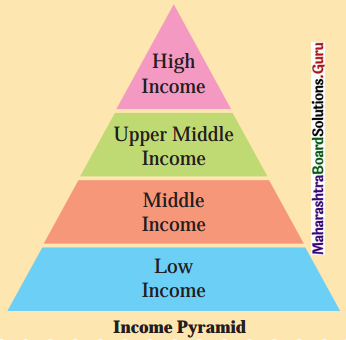
Answer:
| Income groups |
Individuals |
| (i) High Income |
CEO of a Multinational Company |
| (ii) Upper Middle Income |
Executive in a company |
| (iii) Middle Income |
Salesman in a shop |
| (iv) Low Income |
Contract labour |
Find out: (Textbook Pg. No. 52)
Information about the informal sector and list a few activities related to it as per your observation.
Answer:
Informal Sector:
The informal sector is called as ‘unorganized sector’. It consists of unlicensed establishments that do not pay taxes to the government and does not obey the law prescribed by the law.
Activities of the informal sector are not counted in the country’s GNP as they are not disclosed by the owners of such organizations.
Examples:
- Selling things from home or offices or garage, etc.
- Paying a person for removing grass or snow from your garden or doorsteps.
- Paying labourer for removing the upgrowth of trees outside the building wall.
- Paying your office boy for the watering plant in your absence.
- Black marketing, hoarding, smuggling, etc.
- Paying under the table for getting some work done.
- Farmers, beggars, daily wage earners, etc.
Try this: (Textbook Page No. 52)
Question 1.
Given the number of members in your family prepare a list of food items and non-food items purchased monthly.
Answer:
| Food Items |
Non Food Items |
| (a) Cereals |
(a) Petrol or fuel |
| (b) Pulses |
(b) Medicines |
| (c) Milk and Milk products |
(c) Entertainment |
| (d) Vegetables |
(d) Footwears |
| (e) Fruits |
(e) Clothing |
| (f) Spices |
(f) Bedding |
| (g) Meat/Mutton |
(g) Electric material |
| (h) Edible oil |
(h) Electronic Gadgets |
| (i) Sweet Dish |
(i) Scooter |
| (j) Processed food |
(j) Toiletries |
Question 2.
Calculate the total monthly consumption expenditure of your family’s consumption basket as per the current prevailing prices.
Answer:
Note: Students should do this activity by themselves with the help of their family head.

Question 3.
What is the per capita monthly expenditure?
Answer:
Per capita income is the average income per head of population in one year.
Per capita monthly expenditure of an individual family can be calculated by using the following formula.
Per Capita monthly expenditure = \(\frac{\text { Total Income of a family }}{\text { No. of members in a family }}\)
Note: Students can do further calculations with the help of their family head.
Find out: (Textbook Page No. 53)
From the above data on poverty ratios, find out Q3 and P10 and name the states as per the derived partition values.
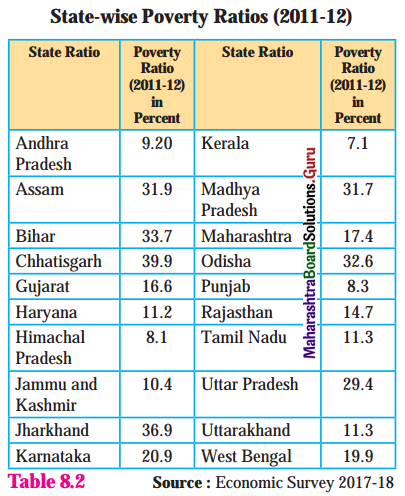
Answer:
Arranging the data in ascending order;
7.1, 8.1, 8.3, 9.2, 10.4, 11.2, 11.3, 11.3, 14.7, 16.6, 17.4, 19.9, 20.9, 29.4, 31.7, 31.9, 32.6, 33.7, 36.9, 39.9
Here, n = 20
Q3 = 3 \(\left(\frac{n+1}{4}\right)^{\text {th }}\) observation
= 3 \(\left(\frac{20+1}{4}\right)^{\text {th }}\)
= 3(5.25)th observation
= 15.75th observation + 0.75 (16th observation – 15th observation)
= 31.7 + 0.75 (31.9 – 31.7)
= 31.7 + 0.75(0.2)
= 31.7 + 0.15
∴ Q3 = 31.85
P10 = \(10\left(\frac{n+1}{100}\right)^{t h}\) observation
= \(10\left(\frac{20+1}{100}\right)^{t h}\) observation
= 2.1th observation
= 2nd observation + 0.1(3rd observation – 2nd observation)
= 8.1 + 0.1 (8.3 – 8.1)
= 8.1+ 0.1 (0.2)
= 8.1 + 0.02
∴ P10 = 8.12
Q3 lies between 31.7 and 31.9 (i.e.) Madhya Pradesh and Assam
P10 lies between 8.1 and 8.3 (i.e.) Himachal Pradesh and Uttarakhand.

You should know: (Textbook Page No. 54)
What are the effects of Poverty?
Answer:
Economic effects of poverty:
- Low national income: As a substantial number of people are poor, their income, saving, and investment are inadequate. This results in low capital formation.
- Adverse effect on production: Since the capital for modernization is not available, the farmers continue with the outdated methods. Similarly, the industry does not have funds for modernization.
- Misallocation of resources: To help the poor, the government spends a huge amount on welfare activities. This restricts the allocation of resources for productive activities.
- Low standard of living: Due to low per capita income and low per capita consumption, people are forced to live in slums. This is reflected in the low standard of living.
- Malnutrition and starvation: Poor people can not afford a balanced diet due to low income. They do not get the minimum calories from their diet.
You should know: (Textbook Page No. 54)
The UN Sustainable Development Goals (SDGs) were adopted by the international community in September 2015 to comprehensively cover social, economic, and environmental dimensions. The SDGs constitute a universal agreement to end poverty in all its forms and dimensions. There are 17 SDGs that have 169 targets to be achieved by 2030. India played an important role in shaping SDGs.
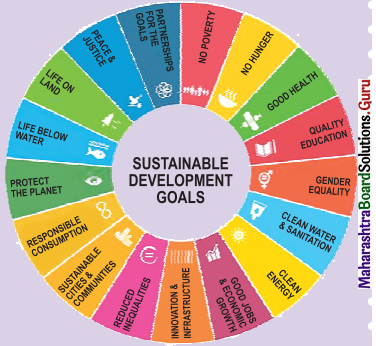
India is one of the signatories of the United Nations Sustainable Development Goals, is committed to the eradication of poverty by 2030 (SDGl).
Read the above passage and answer the following questions:
Question 1.
What do SDGs stand for?
Answer:
SDGs stands for Sustainable Development Goals.
Question 2.
What are the objectives of SDGs?
Answer:
SDGs were adopted by the international community to cover social economic and environmental dimensions. It makes an attempt to end poverty throughout the world.
Question 3.
What is India’s goal to eradicate poverty in relation to SDG?
Answer:
India’s goal is to eradicate poverty from the country by the year 2030.

Question 4.
How many SDGs are prevailing at present?
Answer:
There are 17 SDGs prevailing having 169 targets that are to be achieved by 2030.
Try this: (Textbook Page No. 55)
To ensure food security, the Government of Maharashtra has introduced Tri Colour Family Ration Card. Find out the income criteria of each ration card on the basis of information provided by the Food, Civil Supplies, and Consumer Protection Dept., GoM.
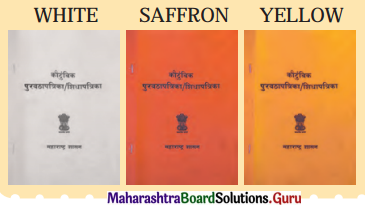
Answer:
| Type of Ration Card |
Income Criteria |
| White |
Rs. 1,00,000 and above |
| Saffron |
Rs. 15,000 to Rs. 1,00,000 |
| Yellow |
People Below the poverty line |
Try this: (Textbook Page No. 55)
Correlate the following Poverty Alleviation Programmes with the given points:
Food security, wage employment, self-employment, education, health, sanitation, financial inclusion, housing.
Answer:
- Employment Guarantee Scheme (EGS): Wage employment
- Swarnajayanti Gram Swarozgaar Yojana (SGSY): Self-employment
- Jan Dhan Yojana (JDY): Financial inclusion
- Swachch Bharat Mission (SBM): Sanitation
- Sarva Shiksha Abhiyaan (SSA): Education
- Antyodaya Anna Yojana (AAY): Food security
- Mahatma Gandhi National Rural Employment Guarantee Scheme (MGNREGS): Wage employment
- Pradhan Mantri Awaas Yojana (PMAY): Housing
- National Health Mission (NHM): Health
11th Std Economics Questions And Answers:
![]()
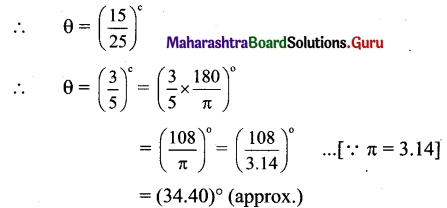
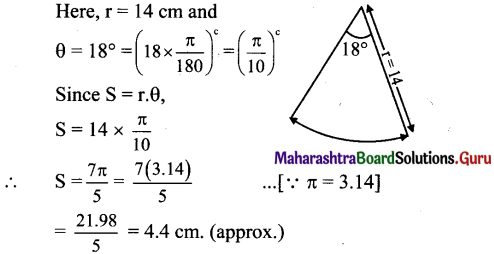
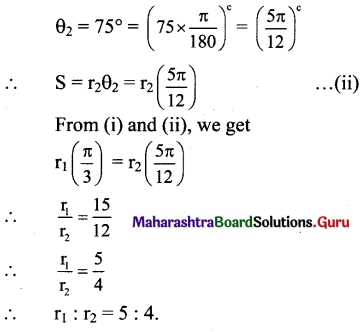
![]()
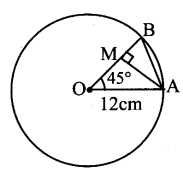
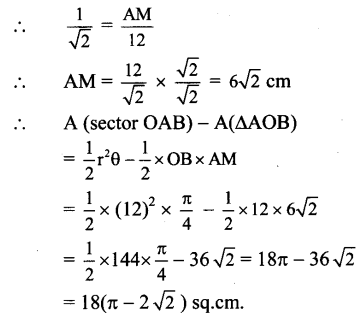

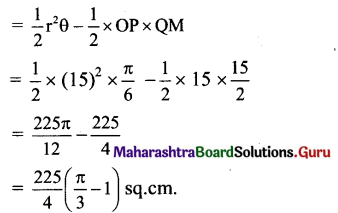
![]()
